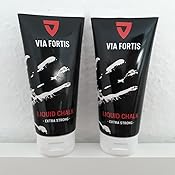
Unleash Your Strength: Top 5 Essentials For Weightlifters
Gear up for strength success! Explore the top five essential accessories that boost performance, protect joints, and propel you to new heights in your weightlifting journey.
HEALTH & FITNESS
Hello! At Listing Five, our editors carefully curate each product we review. Purchases through our links may earn us a commission! Why trust us?
Lifting Belt: Your Core’s Ally
When squatting, deadlifting, or pressing, midline stability is crucial. A lifting belt provides a stable surface for your core to brace against, allowing you to engage your abs and protect your spine during heavy compound lifts. It’s not cheating—it’s intelligent lifting. Master its use and watch your strength soar.
Nylon vs Leather
There are predominantly two types of weightlifting belts, leather, also known as traditional, and Nylon. Now when deciding which is the right fit for you there are three main factors to consider, price, comfort, and quality.
The biggest pros of Leather weightlifting belts are that they quite literally last a lifetime when compared to their Nylon counterpart given the material. That said, Nylon belts are cheaper and could be a great option for beginners starting. Remember that there are also quality Nylon belts with some brands even offering lifetime warranties.
How To Use
Around your torso, just above your hips but below your sternum, fasten your lifting belt. When you squat, the belt may hit your hips if it is too low, reducing your range of motion. You might not be able to create enough intra-abdominal pressure (IAP) if you bind it too high up.
Confirm that the belt's notch is not excessively tight. One finger should be able to fit between your torso and the belt as a general rule, giving you enough room to breathe in and expand your stomach when bracing.
The Benefits
According to Very Well Fit, weightlifting belts serve two primary functions. It keeps the back from hyperextending during overhead lifts and lessens strain on the lower back when lifting in an upright posture.
By compressing the contents of the abdominal cavity, a belt lessens the stress on the lower back. As a result, the intra-abdominal pressure (IAP) rises, giving the lower back's bones more support.
What Are The Drawbacks?
If you're just starting, wearing a belt too soon may slow down the development of your muscles, particularly when learning new movements or working with lighter loads. Also when using lower weights, in particular, overusing a belt can lead to a dependence on it for lifting.
When To Use for Maximum Effect?
When engaging in exercises where the lifter's back supports the weight, like the squat or deadlift, and when engaging in exercises where the back is at risk of hyperextending, like the military press.
Gear Recommendation
Harbinger nylon weightlifting belt
In terms of comfort and adaptability, the Harbinger 4′′ Nylon Lifting Belt performed admirably. The stainless steel loop and the various materials used to cover the exterior and interior parts were both appealing. For the features this belt offers—whether for light lifting or Olympic lifting—the price was also reasonable. There is a lot of Velcro on this belt, which should be taken into account as it does have a lifespan, but that is to be expected with most nylon belts. All things considered, this makes for a very compelling product, especially for those starting out.
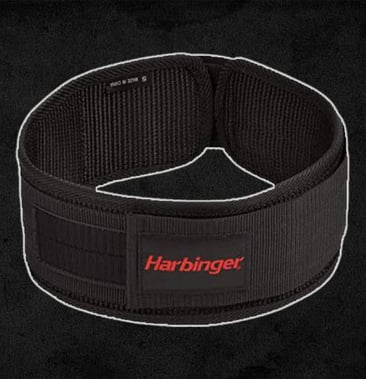

Lifting Straps: Grip Like a Pro
Did you know that using lifting straps can add 5 to 10 pounds to your pulling exercises? These unassuming fabric strips transform your grip, allowing you to focus on the targeted muscles without worrying about slipping fingers. Say goodbye to grip fatigue and hello to personal records.
Materials
Choose the appropriate lifting straps. Leather, nylon, or heavy-duty cotton are used to sew lifting straps. The lifter benefits from a variety of advantages offered by the different materials and styles of these straps.
Straps made of cotton or nylon are less likely to bend out of shape and are firmer than leather straps. Leather straps are more flexible, however, nylon straps allow for a quicker release.
On that note, if a quick release of the barbell is what you prioritize, then Olympic / speed straps are the way to go as they are the shortest type available. However, you would be sacrificing a firmer grip. Now that we mention it, what are the different types of straps?
Types
If you are new to weightlifting or just haven't dabbled in lifting straps before then it can be pretty overwhelming with all the different types there are out there to choose from. Let's break down the four different types and see which one is most likely going to be best for you based on your goals.
There are four main different types of lifting straps. They are the lasso strap, closed loop strap, open loop strap, and figure eight strap.
Lasso: For novices and recreational lifters, Lasso Straps are excellent. They are simple to use and are excellent for dumbbell exercises like one-arm rows and barbell rows in addition to shrugs.
Closed Loop: Olympic lifters are the main users of closed-loop straps because of their quick release from the bar.
For lifts like clean and snatch this is crucial. A pretty serious injury could result from a lifter missing a Snatch behind the head and being unable to release their grip on the bar. The closed-loop design gives the ability to release the bar quickly. The shorter length of these straps is intended to prevent the strap from being excessively wrapped around the bar. Although lengths can vary, a closed loop strap usually measures 16 inches in total from the beginning of the loop to the end, back at the starting point.
Open Loop: Both closed and open loop straps are recommended for Olympic lifters.
What distinguishes an open loop strap from a closed loop strap, then?
An Open Loop strap is the same strap without the loop being formed by stitching, compared to a Closed Loop strap that loops upon itself and is sewn together. It's just the strap on its own.
Figure Eight: The majority of users are powerlifters. To use a figure eight strap, insert your hand through the first loop, wrap the strap around the bar, and then insert your hand through the second loop.
Figure eight straps are different from other straps in that they don't rest between your hand's palm and the bar. The strap goes around the bar to the outside (nearer the plates) of your hand, where your entire hand will be resting on the bar.
Disclaimer: Do not use figure eight straps when doing Olympic lifts because you won’t be able to disengage the barbell quickly when failing a technique or dropping a heavy weight. This will result in serious injury.
When To Use For Maximum Effect?
Norton Barbell: “I don’t believe beginners should use lifting straps for two reasons. First, beginners are still learning how to lift and should have sound technique before introducing accessories like lifting straps. Second, I think a beginner should develop a baseline of strength before using straps.”
How To Wear And Use
According to Norton Barbell Most likely, a Lasso strap or perhaps a closed loop strap will be your first choice of straps. Although they differ slightly, both function essentially in the same way.
So with that in mind. Here’s a clip demonstrating how to wear and use a lasso strap correctly.
Gear Recommendation
Harbinger Padded Cotton Sling
Despite being made of sturdy cotton, the material doesn't feel harsh against the skin.
Single-loop straps are well-known for their adaptability in supporting a lifter during several lifts. These Harbinger straps hold up well with power-focused and slow-moving exercises.
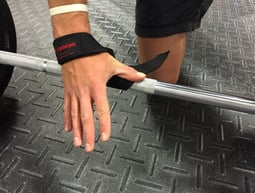

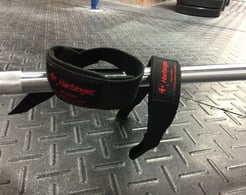

Knee Sleeves: Embrace Joint Care
Your knees require care when performing deep lunges or squats. Knee sleeves lower the risk of injury by providing the knee joint with compression, warmth, and stability. They are necessary for longevity in the lifting game—think of them as warm blankets for laboring joints.
7mm vs 9mm
Gunsmith Fitness says 7mm is more adaptable and suitable for a wider variety of tasks. They are appropriate for people who want a little assistance during their workouts without feeling overly restricted.
9mm is headed into serious territory; it's mainly for powerlifters, people doing heavy squats, and people who need maximum knee support during high-intensity training. They are preferred in situations involving strength training where more joint stability is essential.
Benefits
British weightlifting states that The compression that knee sleeves give the knee joint is their primary advantage. Compression keeps the knees "warm" during a workout by increasing blood flow to the region. In exercises like squats, they also aid in stabilizing the knee joint, which frequently lessens discomfort in the bottom position.
When To Use For Maximum Effect?
Knee sleeves are most frequently used for squatting, whether it be front, back, or overhead.
Before grabbing a pair, it is advised that beginners lift for a while without sleeves to strengthen their knee joints' tendon and their overall positional strength. When you reach a weight that feels appropriately heavy during a lift session, as an intermediate lifter, it's a good idea to put on your sleeves instead of starting the session with them on.
Gear Recommendation
Nisrok Knee Sleeves
Get rid of uncomfortable and large knee braces. Made of 70% neoprene and 30% polyamide, this robust yet airy design offers maximum support during even your hardest routines. Its lightweight construction also makes it feel like a comfortable pair of socks, allowing you to push yourself to new heights without ever feeling uncomfortable. Get ready for consistently strong performances!
Additionally, don't stress over sliding or slipping. Its special product will not move no matter how much perspiration you produce. Additionally, there is a lifetime satisfaction guarantee in place, so you can always get a refund if you're not happy with the quality of your Nisrok Knee Sleeve.
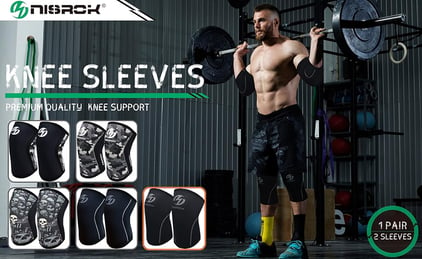

Weightlifting Shoes: Elevate Your Performance
Your feet deserve specialized footwear. Invest in a pair of weightlifting shoes designed for the platform. With elevated heels, solid support, and optimal stability, these kicks will help you maintain proper form and maximize your lifts. Bonus points if they make you feel like a weightlifting superhero.
Characteristics Of A Good Lifting Shoe According To Barbend
Below is a list of criteria you can ask yourself before making your next weightlifting shoe purchase.
How important is stability to you?
How much security do you want in your shoe?
How high of a heel do you need and prefer?
What type of heel would you like?
What type of lifting do you perform most often?
Benefits
Exercise in weightlifting shoes has many advantages, and these advantages are not limited to Olympic lifters. The greater range of motion in the ankle is a major factor in their use. A lifter can squat lower thanks to the raised heel, which also gives their shins more mobility and supported clearance. This facilitates a lifter's ability to descend below weight at the lowest feasible position while maintaining a strong posture and planted foot.
The stability that these shoes offer is another advantage. Establishing a stable base is crucial when squatting or engaging in other power-based exercises. A lifter's ankle may be left on an unstable surface by regular sneakers with a foam or rubber base, which could be dangerous. A lifter will also be able to fully feel and drive through the floor beneath them with a firm, hard sole. Furthermore, the majority of lifting shoes feature one or more straps that offer extra support through the midfoot and upper part of the shoe.
Gear Recommendation
The Adidas AdiPower 2 carried out admirably in a variety of lifting configurations. This shoe performs marginally better than the original Adidas Adipower for functional fitness athletes and recreational lifters. Because of its enhanced flexibility, the Adipower 2 is a little more suitable for a range of activities.
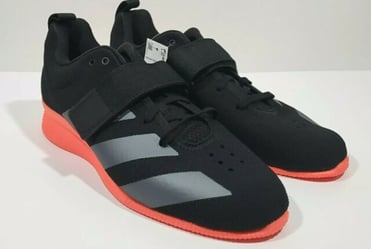

Chalk: Get A Grip
Never undervalue the effectiveness of chalk! Chalk improves your grip by lowering friction and sweating. A little chalk can go a long way when performing pull-ups, snatching, or deadlifting. Grab hold of something, and release your inner Hercules!
What Is Chalk?
If you've ever attempted a deadlift in a warm, muggy setting, you are aware that it gets harder and harder to keep your grip on the bar as you sweat more. Exercise chalk is useful.
Magnesium carbonate is used in lifting chalk (MgCO3). This material aids in moisture absorption. When used in barbell lifts, sweat absorption enhances the grip between your hands and the barbell, reducing the risk of blisters and strengthening it. Rock climbers use this to improve their grip for climbing for similar reasons
How To Apply
Apply it to your hands by feeling the areas that are most likely to come into contact with the bar. This refers to the webbing between your thumb and forefinger as well as the palms of your hands and fingers.
To make sure the hands are coated evenly, quickly rub them together. Then, give your hands a little clap to remove any extra chalk.
Liquid Chalk
Although dry chalk performs as expected, it can be messy, which is why many athletes choose liquid chalk rather than solid chalk. Squeeze bottles are used to package liquid chalk, making it more convenient.
Although it is liquid, liquid chalk still contains magnesium carbonate. It has alcohol in it, which dries fast (30sec). Applying the liquid to your hand causes it to dry and leave MgCO3 behind to improve grip.
Squatting
We want to make sure the bar sits firmly in the correct rack position for squats and any other lifts you may perform on your back
There are two ways that you can use chalk for a squat. One is to have a friend (or awkwardly try it yourself) mark the spot on your t-shirt where the bar is for your squat sets. The second is to coat your hands with extra chalk, then mark the bar where it will touch your upper back.
This is especially beneficial in humid conditions where sweat seeps through your shirt.
Pulling And Pressing
The deadlift is the first exercise for which you will require chalk. Grip strength will eventually become a limiting factor when deadlifting, and chalk works wonders to strengthen your grip and increase your lifting capacity.
Your hands are grasping the bar during pressing motions because your arms are in compression rather than tension, which means that grip is not the limiting factor. Chalk makes gripping easier and helps keep calluses from forming from repeated use.
Gear Recommendation
VIA FORTIS Liquid Chalk
TESTED PREMIUM QUALITY: VIA FORTIS Liquid Magnesium is produced in the EU under the strictest quality control conditions, in compliance with European regulations. Your skin will be thankful!
